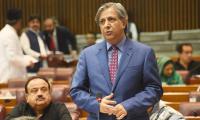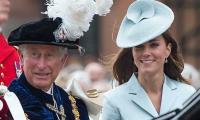ISLAMABAD: The China-Pakistan Economic Corridor (CPEC) has resonated at the World Trade Organization (WTO) in Geneva.
A roundtable focusing on the “One belt One Road” (OBOR) initiative of China was jointly organized by the International Centre for Trade and Sustainable Development (ICTSD) and Chinese Centre for International Economic Exchange (CCIEE) for ambassadors, delegates and trade experts at WTO. It is considered a part of Chinese global economic diplomacy, a message received by The News from Geneva said.
“The CPEC epitomizes South-South trade and investment at its best. It is providing stimulus to a deep regional economic integration and creating a trading block of three billion people - nearly half of the planet, which include half of world’s extreme poor. The deepening of economic integration will lower trade costs, essential for ending poverty” Pakistan’s Ambassador to WTO Dr Tauqir Shah said while speaking at a Belt and Road Initiative (BRI).
CCIEE Chief Economist Ms Wenling Chen, who was keynote speaker, showcased the CPEC as key example of what BRI stood for and frequently referred to the game-changer while explaining BRI to participants of the roundtable. She cited CPEC as an excellent example of intergovernmental coordination.
She highlighted the role of OBOR in global economic integration, explained the driving forces and objectives of BRI, underlined the interaction and mutual support between BRI and other components of global trade governance and how BRI can strengthen and guard multilateral trading system.
Ms Wenling Chen said BRI is for cooperation, peace, and mutual benefit of all the 60 plus countries involved in this initiative. She said OBOR is about connectivity, quality intra-governmental coordination, infrastructure development, trade, investment, global supply chains, financial integration and ultimately for elimination of poverty and development of whole region and 2 world at large.
While commenting on BRI, Dr Tauqir Shah gave Pakistan’s perspective on the CPEC as an early harvest component of BRI. He said OBOR is immensely important for the Global economy and critically significant for Pakistan.
“The CPEC, a US $54 billion initiative, has all the vital elements of economic development like - transport, highways, railways, ports, urban metro, industrial parks, information technology, last but not the least energy - considerable part of this is renewable energy.” The ambassador said the CPEC is proving to be a game-changer for Pakistan and the region, and will be a bridge between three engines of growth, - China, South Asia and Central Asia.
While highlighting economic significance of CPEC for Pakistan, he said the country had a four to five thousand MW energy deficit in 2013, which is 25% of its total generation capacity; and it was costing us 2% of GDP growth. “This development deficit needed an initiative of “Big Bang Scale”, like - CPEC. It is a set of 55 projects - 75% of funding is for providing 17000 MW of energy, over next ten years. This includes solar, hydro and Wind energy projects, many of these being foreign direct investment of Chinese private sector.”
Dr Tauqir Shah said the CPEC has created opportunities for everyone. The solar and wind energy projects have wind turbines and other components from Europe. “Our solar projects have consultants for quality assurance from Germany. During 2016, exports from Europe to Pakistan increased by more than 20%, from US $4.2 billion to $5.2 billion, primarily due to increased economic activity resulting from infrastructure development through CPEC.”
Citing another example to show the impact of CPEC on economy, he said that spurred by the CPEC infrastructure projects, Pakistan’s cement industry is expected to increase its capacity by 56 % to 70 million tons in next five years; Pakistan’s cement sector profitability grew 17pc in the last one year on account of higher domestic demand - credit to the construction sector as of Dec 2016, increased by 26pc.
The ambassador said the speedy implementation of the CPEC and the economic stimulus brought about by it has led to increase in demand of cement across Pakistan. Majority of existing cement plants in Pakistan are expanding, and licenses to set up 10 new plants has been given to foreign investors—mostly foreign direct investment.
He said that the hallmark of the CPEC is the north south highway and rail link, designed to link Arabian Gulf coast of Pakistan at Gwadar in south, to north western Chinese region of Xinjiang and Kasghar, thus reducing the distance of China’s northwest from Arabian Gulf from 14000 kilometers to 2500 kilometers, transforming the trade cost for whole region.
“We firmly believe the CPEC will result in increase in trade, investment and financial flows, bringing peace and prosperity to the region and even beyond.”
In this image labourer laying a sewerage line in Peshawar. — Facebook/Peshawar Development Authority/FileJHANG: The...
Members of Berozgar Naujawan Tehreek hold a protest against unemployment in Peshawar on April 22, 2024. —...
Participant speaks three-day national level mega event “Youth Robotec’24,” organized by the National Center of...
This representational image shows polythene bags. — Unsplash/FileMULTAN: Polythene bags have disastrous effects on...
A representational image showing ambulances parked at an incident site. — Facebook/Rescue 1122...
A sign of the World Health Organization at their headquarters in Geneva. — AFP/FilePESHAWAR: The representative of...







